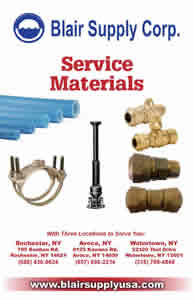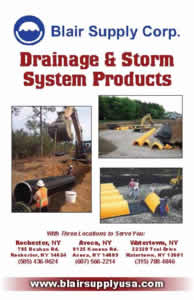Blog
The Best Pipe Materials for Water Mains

In order to ensure reliable water supply for homeowners and businesses in a community, the water mains pipes need to be made from the right materials. The piping materials used for main water supply have changed over the years, with the development of new technologies.
In this article, we explore the best pipe materials for water mains and discuss how the right types of pipe can maximize longevity and minimize the need for expensive mains repairs and downtime. Learning about the different types of piping materials can also help you choose the right water main tools available for sale in the water and wastewater distribution industry. Read on.
What is the best pipe for a water main?
Water main pipes can be made from a variety of materials, including metal, clay, concrete, and plastics. In terms of size, the most common water main pipe diameter ranges from 6 to 16 inches, although there are 8, 10, and 12-inch options available as well. Here is a list of the most common water main piping materials:
- Cast iron
- Ductile iron
- Steel
- Copper
- Vitrified clay
- Reinforced concrete
- Asbestos cement
- PVC
- HDPE
- Fiberglass
An important question still remains: what kind of pipe material is best for a water main system? Each piping material has its own unique characteristics, and which one would be best for a particular water mains application depends on a variety of factors. Water main pipes need to withstand the specific soil and water characteristics of the water supply application. Some pipe materials are too brittle, while others may be too chemically unsafe.
Throughout history, the primary types of water main pipes changed from vitrified clay and concrete pipes to cast iron and ductile iron pipes in the 20th century. Although many of these pipes are still used today, especially those made from ductile iron, most new water main applications use HDPE and PVC pipes owing to their unique properties. PVC pipes, in particular, are inexpensive, lightweight, and durable, as well as highly resistant to corrosion and most chemicals.
Which is better: copper or PVC for water main line?
Both copper and PVC have their uses in modern water distribution systems. Copper, on one hand, is a strong, yet flexible metal that is often the first choice for home plumbing. Professional plumbers and contractors often use copper because it can be used to form pipes with thin but strong walls. However, copper is prone to acidic corrosion. Copper is typically used for the final pipe run from the water mains to the businesses and households receiving the water.
PVC pipes, on the other hand, are primarily used for water main lines. This is because PVC is known for its corrosion and chemical resistance, in addition to the fact that it’s lightweight, relatively cheap, and long lasting. In addition to potable water distribution, PVC is also used in irrigation systems, gravity and live sewers, storm drains, and force mains.
Looking for water main tools for sale? Contact Blair Supply now

In addition to offering top-brand equipment, we are also known for convenient and affordable nationwide shipping. We can deliver your desired tools and materials no matter where you are located in the nation, since we ship our products from three well-equipped warehouses in Avoca, Watertown, and Rochester, NY. Browse our website or give us a call today to learn why we’ve been the leading supplier of utility distribution materials since 1958.






